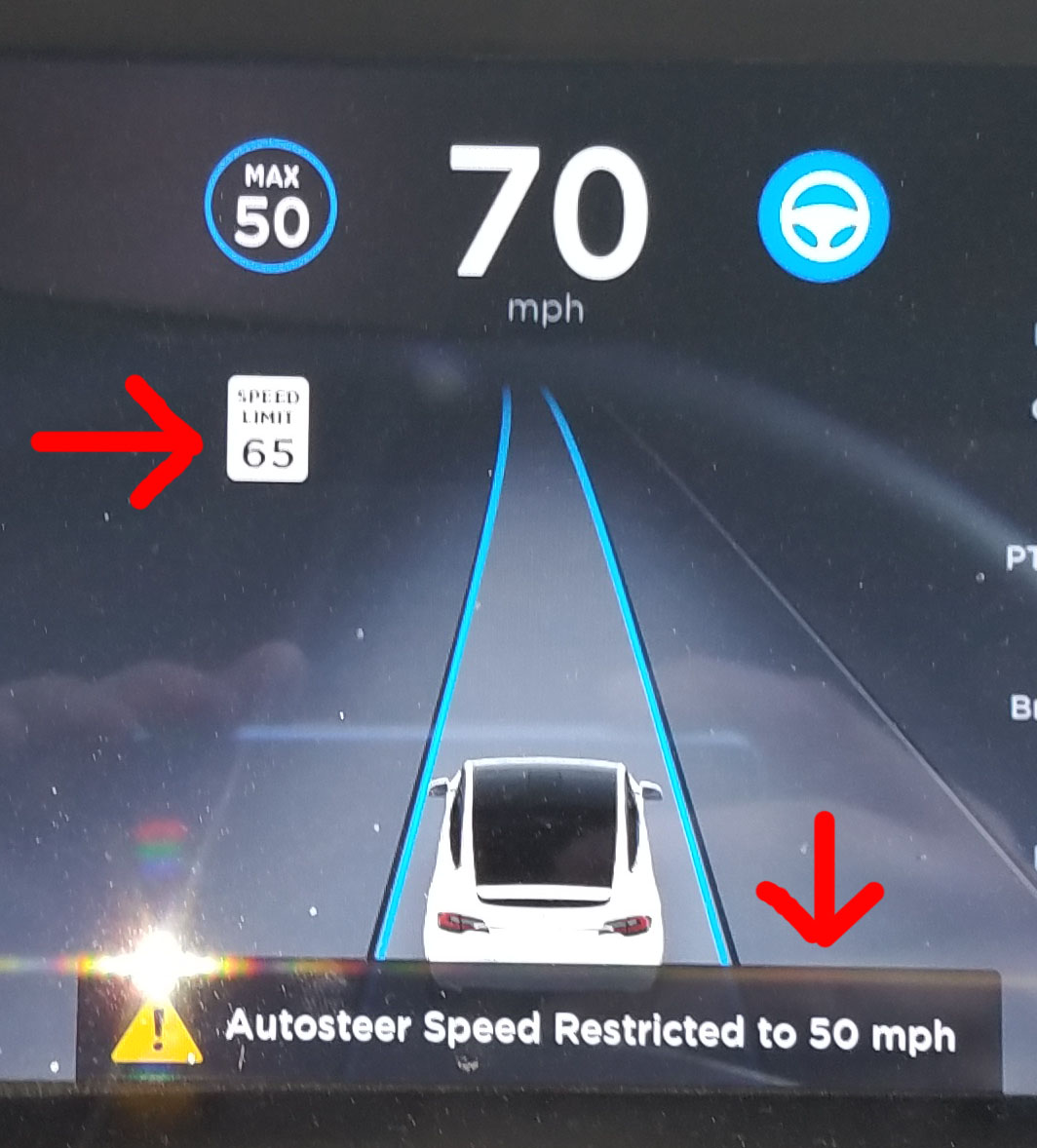I saw this exact behavior today while driving on the Sam Houston Tollway in Houston.
I was driving Northbound on the West Sam Houston Tollway in Houston, TX, in the leftmost inside lane, traveling 75 MPH with TACC and Autosteer engaged. A police vehicle was stopped on the left shoulder of the road. As I got close to the police vehicle, I received the same message as wk057 showed above -- a yellow warning triangle message on the dashboard that stated "Autosteer restricted to 50 MPH". The vehicle's speed was 75 MPH and began slowing down, the speed limit was 65 MPH, which was also properly registered by the vehicle and was showing on the dashboard.
This is apparently a new safety feature of autosteer. At the time this video was taken, the vehicle is on firmware version 8.0 (2.50.114). I believe the safety feature is to prevent a high differential lane speed between your lane and an adjacent lane when autosteer is engaged. The vehicle saw the stopped car to it's left, and interpreted that the differential speed between my vehicle and the stopped vehicle was too high for autosteer, and so began to limit my speed to 50 MPH.
I have dashcam video of this:
You can look at the silver vehicle on my right and see that my vehicle began to slow relative to it. I disengaged autosteer (you can hear the autosteer disengage tone), and sped back up to my previous cruising speed of 75 MPH, and reengaged autosteer. No restriction was in force upon re-engagement.
I believe Electrek
has also posted about this issue.
I have two problems with this:
1. Sudden deceleration without warning is not a good idea. Now, in my case, the deceleration wasn't very sudden. I saw the dashboard warning, realized that the vehicle was slowing down and pressed the accelerator to speed back up. I caught it at about 68 MPH (a deceleration of 7 MPH from my cruising speed). I disengaged AP, sped back up to 75 MPH, and reengaged AP.
2.
No documentation or mention of this new behavior. This is the major issue. If I had known about it, I would have expected it coming up on the stopped police vehicle and been ready for it. But without any mention of this in the release notes, it caught me totally by surprise. Not good, Tesla.




